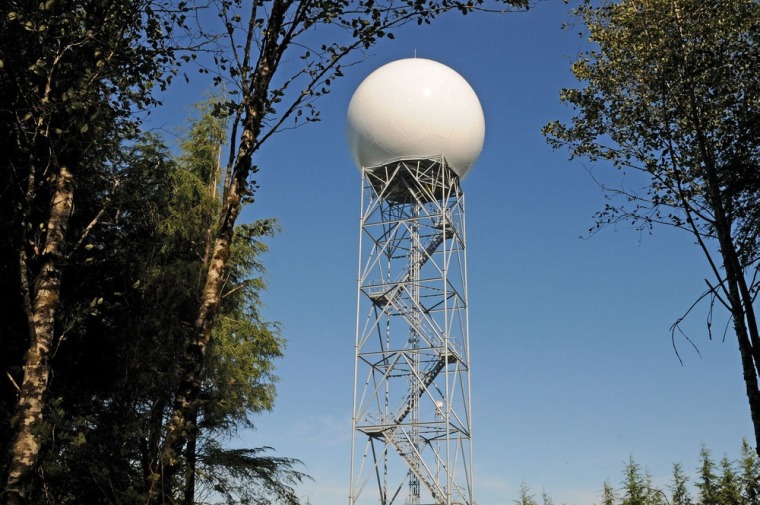When it comes to storm forecasting, there's a new national leader. Washington state this week deployed an advanced Doppler weather radar that uses "dual polarization" — a technology that better predicts rain amount and even see if a twister is hiding inside a storm.
By the end of October, its two other Doppler radars should be upgraded as well, making Washington the first in the nation to be fully dual polarized.
The new radar is "the first addition to the nation's weather radar network since the 1990s," National Weather Service Director Jack Hayes said at the dedication on Thursday in Copalis Beach, Wash.
Dual polarization, he added, provides "significantly more information and clearer pictures of precipitation and severe weather to help National Weather Service meteorologists provide more accurate and timely forecasts."
The service hopes to add the technology to all of its 169 Doppler radars within a few years.
The system dedicated Thursday is also the first on Washington's coast — a key feature that allows forecasters to get around the Olympic mountains, which until now had blocked radar tracking of systems coming in from the ocean.
"We've finally crossed the finish line in making Washington state's first coastal weather radar a reality," said Sen. Maria Cantwell, who worked to get federal funds for the system. "For years we've worked tirelessly to strengthen our detection of coastal storms blocked from our view by the Olympic Mountains."
Whereas older Doppler radars only provide a horizontal view of storms, dual polarization allows a radar to scan vertically as well as horizontally.
Pulses from those scans are measured to see how strong they are, providing two-dimensional data on what's in a particular weather system.
Dual polarization can even be used to see if a tornado is lurking inside a dense rain system — a valuable improvement since most twisters now aren't spotted until they're on the ground.
